

Codonanthe is a rare find in garden stores, but the cascading string of leaves is clearly worth the quest!
Key Codonanthe facts
Name – Codonanthe
Family – Gesneriaceae (African violet family)
Type – indoor plant, hanging plant
Height – 6 inches, trails down to 2 feet (15 and 60 cm)
Soil – very well-draining soil mix
Exposure – bright, indirect light
Propagation: cuttings – Flowering: all year – Fun fact: love affair with ants
Follow these tips to discover and care for your Codonanthe just the way it should!
Codonanthe grows best… in the air! It’s an epiphyte plant, like many orchids and other air-plants. It doesn’t need much soil since it usually grows on trees.
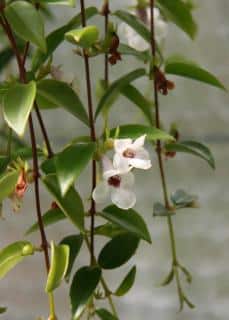 Codonanthe will be happiest in a hanging pot or suspension. Place it on a shelf or up to the side of a doorway to maximize the beautiful trailing.
Codonanthe will be happiest in a hanging pot or suspension. Place it on a shelf or up to the side of a doorway to maximize the beautiful trailing.
The best soil for Codonanthe is any excellent-draining soil mix, such as soil mix designed for orchids.
Be wary because Codonanthe isn’t a classic houseplant. It hates sitting in waterlogged, soggy soil.
Pot size doesn’t really matter. To trail a good two feet, a pot about 8 inches across and 4 inches deep is enough (20 cm across, 10 cm deep).
Its small size and need for high air moisture make Codonanthe a great choice for a terrarium.
Codonanthe needs to be protected from freezing, and even simply cool weather might kill it. Don’t let is experience temperatures lower than 40°F (5°C).
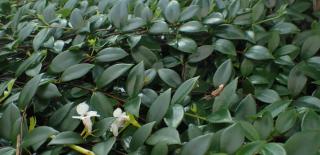 If winters stay mild and above this temperature, you can set your Codonanthe up in the garden.
If winters stay mild and above this temperature, you can set your Codonanthe up in the garden.
Codonanthe is an epiphyte plant – this means that in the wild, it grows without any soil! It is very similar to orchids since it usually lives up in trees.
The best way to water Codonanthe is as you would orchids, with the dunk-and-drip-dry technique.
Codonanthe can survive short droughts, but this will trigger leaf and stem loss. It will also delay flowering.
Avoid direct sunlight and any heating implements like radiators. Direct sun and heat sources will dry the plant out, turning it brown.
In the wild, this plant lives up in trees. It’s always shaded from strong sun and trees release lots of air moisture.
Codonanthe is an easy plant to care for. Occasionally (once a month, skip winter), add liquid fertilizer to the watering mix.
High moisture is essential. It may be that the perfect spot is in your kitchen or in the bathroom!
You can repot the plant every two or three years to replenish soil nutrients.
Codonanthe doesn’t really need any trimming. Cutting a sprig will cause branching out into new sprigs.
Older portions tend to turn woody. If you want to rejuvenate your plant:
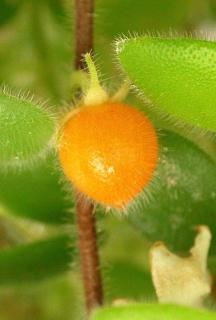
Prepare soil cuttings from 4 to 6-inch segments of a trailing vine (10-15 cm).
Cuttings will also work from individual pairs of leaves, if you prick them in a tray. Keep them moist, just as you would when propagating succulents.
Professional propagators are able to use micro-propagation to multiply Codonanthe quickly and efficiently, helping make this rare plant more affordable!
This is a rare houseplant. Not many stores have it for sale.
Happy owners will be very glad to share a few cuttings from their plant if you ask them politely!
The following species and varieties are particularly noteworthy:
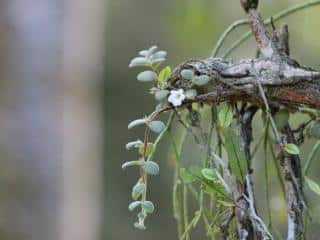
Other species are even rarer:
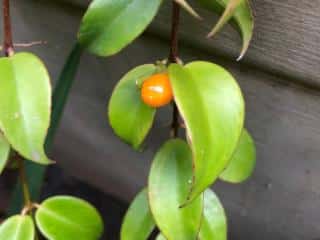
Similar flowers to those of Codonanthe devosiana.
Clearly lance-shaped leaves, tinged with red around the edges. Leaves turn dark cherry red as leaves age. Leaves are more tightly packed than other species.
Bright green leaves, somewhat larger than those of other species. Trails faster as leaves are spaced by several inches (5-8 cm) between pairs.
You won’t often have problems with Codonanthe, but if you do, solve them here.
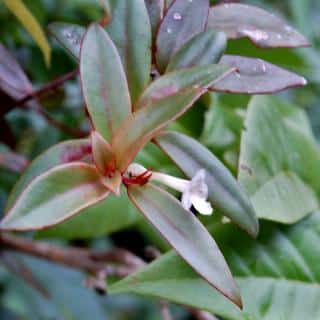
It’s perfect to spruce up professional work spaces. Hang Codonanthe just above an office zz plant. They’ll both seem to reach out to each other!
This plant can live for decades if well cared for. A rare variety has reached the venerable age of 40 years!
There is a rare symbiotic relationship between Codonanthe and ants!
It’s doubtful that Codonanthe will attract ants into your home. If it gets to be a problem in the garden, read up on these natural ways to get rid of ants.
Codonanthe has been the cause of at least one non-fatal poisoning. Although no deaths are connected to the plant, stay on the safe side and don’t let toddlers – or pets! – munch on leaves, flowers, or those bright candy-colored fruits.
Codonanthe is also one of the air-purifying plants, but its main focus is absorbing Carbon Dioxide at night, CO2. Most plants only reduce CO2 levels during the daytime, but expel it at night. This makes Codonanthe the perfect plant to have in your bedroom!
Credits for images shared to Nature & Garden (all edits by Gaspard Lorthiois):
Suspension with Codonanthe by Michael Wolf under © CC BY-SA 3.0
Codonanthe ground cover by Krzysztof Ziarnek under © CC BY-SA 4.0
Codonanthe fruit by Vojtěch Zavadil under © CC BY-SA 4.0
Red Codonanthe by Christian Feuillet under © CC BY-SA 2.0